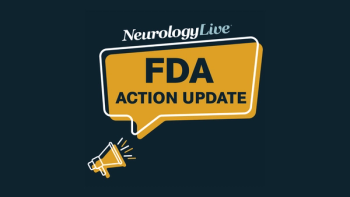
AbobotulinumtoxinA Adds Upper Limb Spasticity to Pediatric Indication, Excluding Cerebral Palsy
This regulatory approval in the treatment of pediatric patients aged 2 years and older with upper limb spasticity, excluding those with cerebral palsy, marks abobotulinumtoxinA (Dysport, Ipsen) as the first botulinum toxin approved for both upper and lower pediatric spasticity.
Ann Tilton, MD
The FDA has given the go-ahead to Ipsen Biopharmaceuticals’ abobotulinumtoxinA (Dysport) for the treatment of upper limb spasticity in pediatric patients aged 2 years and older, with the exclusion of those with cerebral palsy.1
This additional indication makes the therapy the first botulinum toxin approved for both upper and lower pediatric spasticity, the latter of which it received regulatory approval for in July 2016.
“For physicians, it is reassuring to have a botulinum toxin treatment in Dysport which demonstrated sustained symptom relief for spasticity, which can be physically challenging for children,” said Ann Tilton, MD, study investigator and professor of clinical neurology, Louisiana State University Health Sciences Center New Orleans, in a statement. “This FDA decision for Dysport means we now have an approved therapy to offer children and adolescents seeking improvements in mobility in both upper and lower limbs.”
Regulatory decision was determined based on the findings of a phase 3 study of abobotulinumtoxinA in doses of 8 Units/kg (n = 70) and 16 Units/kg (n = 70) compared to 2 Units/kg (n = 70), with outcomes measured by Modified Ashworth Scale (MAS) in the elbow or wrist flexors. Post-initial dose, patients could receive up to 3 additional administrations at their planned dose or titrated up or down per investigator judgment.
After 12 weeks, significant reductions in spasticity symptoms were observed for most children in both upper and lower limbs. In total, improvements from baseline in MAS were -2.0, -2.3, and -1.6 for the 8, 16, and 2 Units/kg groups, respectively. Both the 8 and 16 Units/kg doses were given a 2.0 score on the Physician Global Assessment (PGA), though this was not statistically different from the 1.8 score received by the 2 Units/kg dose. A majority of patients were retreated for upper limbs between 16 and 28 weeks, although some had a longer duration of response, lasting to 34 weeks or longer.
Additionally, mean Goal Attainment Scale (GAS) scores were statistically similar between groups, with the 16 Units/kg group and the 8 Units/kg group reporting scores of 52.6 compared to the 2 Units/kg group score of 52.1.
“This approval is a testament to Ipsen’s legacy in neurotoxin research and continued commitment to advancing patient care,” said Kimberly Baldwin, Vice President, Franchise Head, Neuroscience Business Unit, Ipsen. “We believe the data for both pediatric upper and lower limb spasticity underscore the role of Dysport as an important treatment option for patients seeking long-lasting spasticity symptom relief.”
Adverse reactions (AEs) occurring at a rate of ≥3%, and reported more frequently than the control group in those with upper limb spasticity were upper respiratory tract infection, pharyngitis, nausea, muscular weakness, headache, and epilepsy.
The treatment is also indicated for the treatment of cervical dystonia and spasticity in adults. The product is available as 300 Unit and 500 Unit single-dose vials.
REFERENCE
Ipsen Announces FDA Approval of Dysport® (abobotulinumtoxinA) for the Treatment of Upper Limb Spasticity in Children, Excluding Cerebral Palsy [press release]. Cambridge, MA: Ipsen Biopharamceuticals; Published September 26, 2019. businesswire.com/news/home/20190926005480/en/Ipsen-Announces-FDA-Approval-Dysport®-abobotulinumtoxinA-Treatment. Accessed September 27, 2019.
Newsletter
Keep your finger on the pulse of neurology—subscribe to NeurologyLive for expert interviews, new data, and breakthrough treatment updates.































